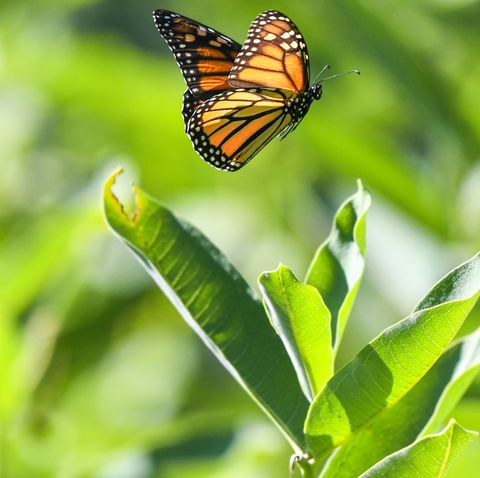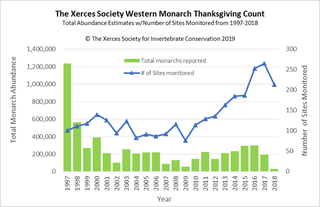Monarch Butterflies Are on the Verge of Extinction
The iconic butterfly species has hit its lowest population yet.
By Avery Thompson
GETTY IMAGES/ROBERT D. BARNES
Monarch butterflies are struggling. In fact, if we do nothing, they might disappear altogether in a few years. A new survey of monarch butterfly populations in California reveals the number of butterflies is dangerously low. If we do nothing, this iconic species could soon go extinct.
The survey was conducted by the Xerces Society for Invertebrate Conservation, along with hundreds of volunteers that turned out on Thanksgiving. Each year, the society and its volunteers count butterflies in around 300 different locations across the state, maintaining a record of monarch populations going back decades.
That record shows monarch populations have been dropping alarmingly fast. In 1980, California held around 4.5 million monarch butterflies. In the mid-2000s, that number had dropped to a little over 100,000. Last year, there were only 28,429.

A graph showing the dramatic decline in monarch populations over the last 20 years.
THE XERCES SOCIETY FOR INVERTEBRATE CONSERVATION
At some point, scientists began asking themselves how low the monarch butterfly population could drop before it would be unable to recover. It’s impossible to know for sure, but the consensus among experts is that the cutoff value is around 30,000 butterflies.
That’s very bad news, because the monarch may already be doomed. If these numbers are correct, the species simply won’t be able to reproduce fast enough to replace the individuals that die off. The monarch butterfly will go extinct quickly, possibly as soon as the next year or two.
It’s possible the survey numbers are wrong, of course, or it might be possible for the species to survive on fewer numbers than scientists think. But at best, this gives monarchs just a few more years before inevitable extinction. One thing is very clear: Monarchs are dying, and fast. Unless we do something, the only question will be how many years until they’re gone for good.
Source: San Francisco Chronicle
No comments:
Post a Comment